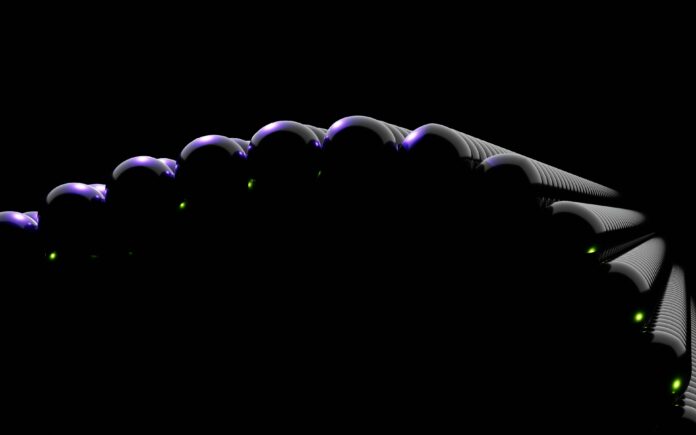The Weeping Fig, scientifically known as Ficus benjamina, is a captivating and iconic plant species renowned for its graceful, drooping foliage and elegant silhouette. Belonging to the genus Ficus within the family Moraceae, the Weeping Fig is native to Southeast Asia, where it thrives in warm, tropical climates. Its distinctive appearance and versatility have made it a popular choice for indoor and outdoor landscaping, adding a touch of natural beauty to homes, offices, parks, and gardens around the world.
Weeping Fig, with its slender, arching branches adorned with glossy, ovate leaves, exudes an air of tranquility and sophistication wherever it is planted. The leaves, typically dark green and lustrous, feature pointed tips and wavy margins, imparting a sense of movement and fluidity to the plant’s overall aesthetic. As the name suggests, the Weeping Fig’s branches cascade downward in a graceful manner, creating a cascading canopy of foliage that lends a serene and contemplative atmosphere to any space.
The Weeping Fig’s adaptability and resilience make it well-suited to a variety of growing conditions, ranging from bright, indirect light to partial shade. Indoors, it thrives in well-draining potting mixtures and benefits from regular watering to maintain soil moisture. However, it is important to avoid overwatering, as excessive moisture can lead to root rot and other fungal diseases. Outdoors, the Weeping Fig prefers sheltered locations with protection from strong winds and direct sunlight, particularly in regions with hot, dry climates.
One of the Weeping Fig’s most striking features is its ability to grow into an impressive specimen over time, reaching heights of up to 30 feet or more under ideal growing conditions. With proper care and maintenance, it can develop a dense, lush canopy that provides shade and shelter for wildlife and humans alike. Pruning can help shape the plant and control its size, promoting branching and enhancing its ornamental appeal. Additionally, occasional fertilization with a balanced, water-soluble fertilizer can provide essential nutrients to support healthy growth and vigor.
Weeping Fig, like many ficus species, is known for its air-purifying properties, which help improve indoor air quality by removing harmful toxins such as formaldehyde, benzene, and trichloroethylene from the environment. This makes it an excellent choice for indoor spaces, where it not only adds visual interest but also contributes to a healthier and more harmonious living or working environment. Furthermore, its low-maintenance nature and relatively pest-resistant foliage make it an attractive option for beginner and seasoned gardeners alike.
In addition to its ornamental value, the Weeping Fig holds cultural and symbolic significance in various societies around the world. In some cultures, it is revered as a symbol of prosperity, longevity, and resilience, with its graceful foliage evoking feelings of tranquility and abundance. In others, it is associated with folklore and mythology, often featured in stories and legends as a mystical or sacred plant imbued with supernatural powers.
Despite its many virtues, the Weeping Fig is not without its challenges. Like other ficus species, it is susceptible to certain pests and diseases, including spider mites, scale insects, and leaf spot fungus. Regular inspection and proactive pest management strategies, such as washing the foliage with soapy water or applying horticultural oil, can help prevent infestations and maintain plant health. Additionally, providing adequate humidity and ventilation can help mitigate the risk of fungal diseases and leaf drop.
The Weeping Fig is a captivating and versatile plant species that adds beauty, elegance, and a touch of natural tranquility to any indoor or outdoor space. With its graceful, drooping foliage, air-purifying properties, and cultural significance, it has earned its place as a beloved ornamental plant in gardens, homes, and public spaces worldwide. By providing the proper care and attention it deserves, the Weeping Fig can thrive for years to come, enriching the lives of those who encounter its serene and timeless beauty.
Weeping Fig is often used as a focal point in interior design, where its graceful form and lush foliage create a soothing ambiance and bring a sense of the outdoors into indoor spaces. Its versatility allows it to be incorporated into various design styles, from modern and minimalist to traditional and eclectic, adding a touch of greenery and natural elegance to living rooms, offices, atriums, and lobbies. Whether used as a standalone specimen or grouped with other plants, the Weeping Fig enhances the visual appeal of any interior setting, serving as a living work of art that evolves and grows with time.
Weeping Fig’s popularity as a houseplant can be attributed not only to its aesthetic qualities but also to its relatively low-maintenance requirements. It thrives in indoor environments with moderate temperatures and humidity levels, making it well-suited for cultivation in homes and offices. Regular watering, pruning, and occasional fertilization are all that is needed to keep the Weeping Fig healthy and vibrant indoors. With proper care, it can become a cherished companion, brightening up living spaces and bringing a sense of calm and serenity to its surroundings.
In outdoor landscapes, Weeping Fig serves as a versatile ornamental tree, valued for its graceful form, evergreen foliage, and adaptability to a range of growing conditions. It is often used as a specimen tree in parks, gardens, and public spaces, where its elegant silhouette and lush canopy provide shade, visual interest, and habitat for wildlife. Additionally, Weeping Fig can be planted as a hedge or screen to create privacy or as a focal point in mixed borders, where it adds vertical dimension and year-round greenery to the landscape.
Despite its ornamental appeal and cultural significance, Weeping Fig can pose challenges in certain environments, particularly when grown indoors. One common issue faced by indoor growers is leaf drop, which can occur in response to changes in light, temperature, humidity, or watering habits. To prevent leaf drop and maintain plant health, it is important to provide stable growing conditions and avoid sudden changes in environmental factors. Additionally, regular pruning and grooming can help improve air circulation and reduce the risk of pest infestations and disease.
Another potential challenge associated with Weeping Fig is its invasive root system, which can cause damage to sidewalks, driveways, and underground utilities if planted too close to structures or paved surfaces. To mitigate the risk of root damage, it is advisable to plant Weeping Fig in well-drained soil with sufficient space for root expansion and to periodically monitor its growth to prevent overcrowding. Additionally, installing a root barrier or planting Weeping Fig in a large container can help contain its root growth and minimize potential conflicts with surrounding infrastructure.
In conclusion, Weeping Fig is a beloved plant species valued for its graceful form, lush foliage, and cultural significance. Whether grown indoors as a houseplant or outdoors as an ornamental tree, it adds beauty, elegance, and a sense of tranquility to any environment. By providing the proper care and attention it requires, Weeping Fig can thrive for years to come, enriching the lives of those who appreciate its timeless beauty and enduring presence.


















